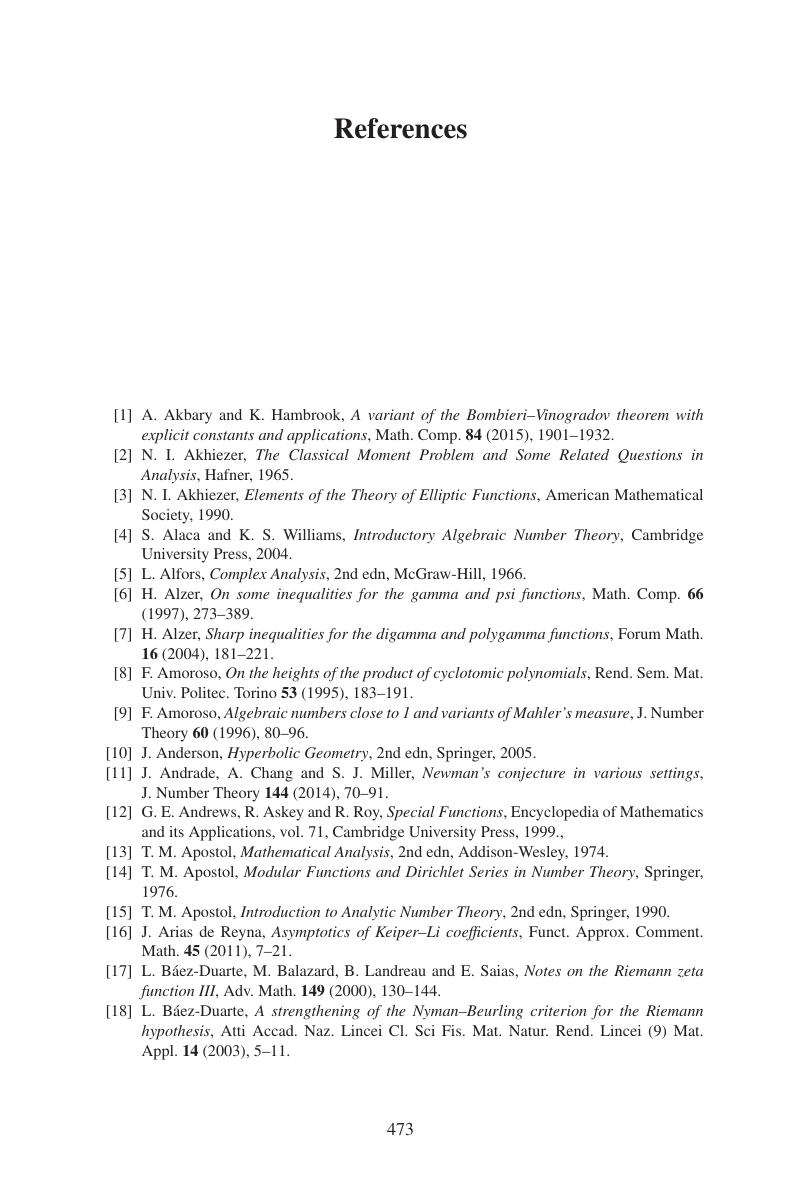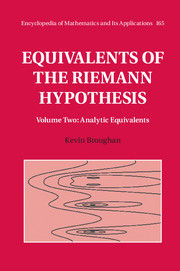Book contents
- Frontmatter
- Dedication
- Epigraph
- Contents
- Miscellaneous Frontmatter
- List of Illustrations
- List of Tables
- Preface for Volume Two
- List of Acknowledgements
- 1 Introduction
- 2 Series Equivalents
- 3 Banach and Hilbert Space Methods
- 4 The Riemann Xi Function
- 5 The De Bruijn–Newman Constant
- 6 Orthogonal Polynomials
- 7 Cyclotomic Polynomials
- 8 Integral Equations
- 9 Weil's Explicit Formula, Inequality and Conjectures
- 10 Discrete Measures
- 11 Hermitian Forms
- 12 Dirichlet L-Functions
- 13 Smooth Numbers
- 14 Epilogue
- Appendix A Convergence of Series
- Appendix B Complex Function Theory
- Appendix C The Riemann–Stieltjes Integral
- Appendix D The Lebesgue Integral on R
- Appendix E The Fourier Transform
- Appendix F The Laplace Transform
- Appendix G The Mellin Transform
- Appendix H The Gamma Function
- Appendix I The Riemann Zeta Function
- Appendix J Banach and Hilbert Spaces
- Appendix K Miscellaneous Background Results
- Appendix L GRHpack Mini-Manual
- References
- Index
- References
References
Published online by Cambridge University Press: 27 October 2017
- Frontmatter
- Dedication
- Epigraph
- Contents
- Miscellaneous Frontmatter
- List of Illustrations
- List of Tables
- Preface for Volume Two
- List of Acknowledgements
- 1 Introduction
- 2 Series Equivalents
- 3 Banach and Hilbert Space Methods
- 4 The Riemann Xi Function
- 5 The De Bruijn–Newman Constant
- 6 Orthogonal Polynomials
- 7 Cyclotomic Polynomials
- 8 Integral Equations
- 9 Weil's Explicit Formula, Inequality and Conjectures
- 10 Discrete Measures
- 11 Hermitian Forms
- 12 Dirichlet L-Functions
- 13 Smooth Numbers
- 14 Epilogue
- Appendix A Convergence of Series
- Appendix B Complex Function Theory
- Appendix C The Riemann–Stieltjes Integral
- Appendix D The Lebesgue Integral on R
- Appendix E The Fourier Transform
- Appendix F The Laplace Transform
- Appendix G The Mellin Transform
- Appendix H The Gamma Function
- Appendix I The Riemann Zeta Function
- Appendix J Banach and Hilbert Spaces
- Appendix K Miscellaneous Background Results
- Appendix L GRHpack Mini-Manual
- References
- Index
- References
Summary

Information
- Type
- Chapter
- Information
- Equivalents of the Riemann Hypothesis , pp. 473 - 484Publisher: Cambridge University PressPrint publication year: 2017
